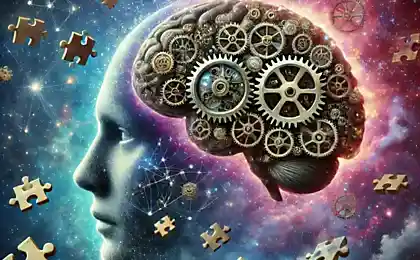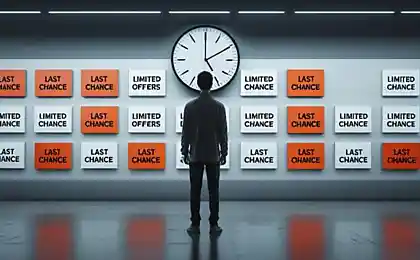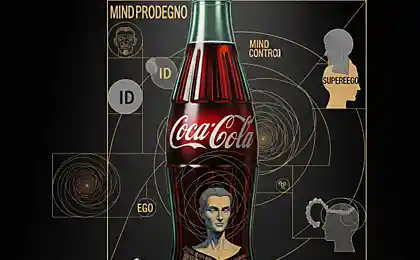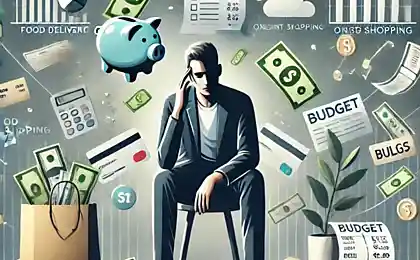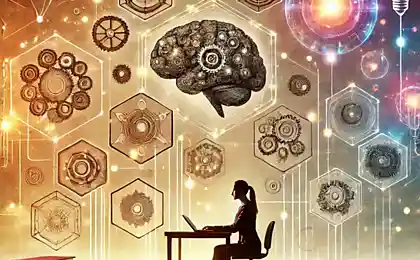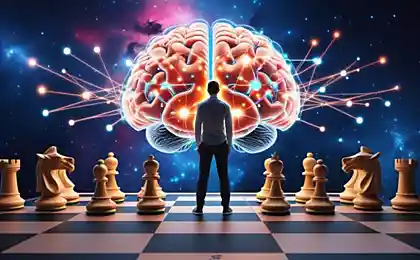189
How Not to Become a Marketing Victim: The Art of Countering Corporations

In today’s world, we are constantly exposed to marketing. According to research, the average person sees up to 10,000 advertising messages a day. Behind each of them are billion-dollar corporations whose primary purpose is to make us part with money. But how do we know when we really need a product and when marketers are just pulling the strings to create the illusion of necessity? Let’s understand this mechanism and learn to protect ourselves from unwanted marketing influences.
We're not just consumers, we're the goal.
Marketing strategies are becoming more sophisticated, using neuromarketing, psychography and advanced big data analytics to create an almost irresistible desire to buy a product. Corporations spend billions researching how to circumvent our defense mechanisms and activate impulsive buying behavior. But awareness is the first step to protection.
Manipulation Mechanisms: How They Work
Modern marketing uses a deep understanding of human psychology to create an overwhelming desire to buy. Many of these mechanisms work at a subconscious level, making them particularly effective. Here are some of the most common strategies:
Hidden Persuasion Tactics
- Artificial scarcity “Only today!”, “2 grand left” – these phrases activate our fear of missing an opportunity (FOMO), even when there is no real scarcity.
- Social proof We tend to think that what most people do is right, without even checking the reality of those numbers.
- Price anchors When you see a product for 5,000 рядом next to a similar one for 10,000кой, the former seems to be a bargain, even if its real value is 2,000кой.
- Personalization Algorithms track your behavior and show exactly what is most likely to make you part with money, creating the illusion that the product is designed specifically for you.
Research shows that up to 95% of our consumer decisions are made subconsciously. Marketers know this and actively use it. Neuromarketing studies what colors, sounds, and images make us want to buy, and microtargeting allows us to direct messages with almost surgical accuracy.

How to determine if you are being manipulated
The first step to protection is to recognize manipulation. Here are a few signs that marketers are trying to get around your rational thinking:
- Feeling unexplained urgency or pressure to make a decision immediately
- You feel afraid to miss an opportunity, even if you have never thought about a product before.
- The seller actively uses emotional triggers instead of rational arguments.
- Proposal terms are confused or presented using darkpatterns
- The sentence seems "too good to be true"
Today’s companies don’t just sell products – they create needs we didn’t even know existed. The iPhone didn’t respond to existing demand — it created a new category of needs that we used to do just fine without.
The strategy of liberation: practical methods of protection
Instead of avoiding shopping altogether (which is unrealistic), we can develop a healthy, conscious approach to consumption. Here are specific methods to help determine if you really need to buy or are being manipulated:
Five-step decision-making system
- 24-hour rule Delay any optional purchase for at least 24 hours. Impulsive desire by this time often wanes.
- The Three Questions Method Before buying, ask yourself, “How did I live without it before?”, “What happens if I don’t buy it?”, “Will I use it in a month?” ?
- Budgeting the “reverse side” Transfer the cost of the product into opening hours: “Is this gadget worth 20 hours of my life?”
- “Alternative Use” Technique Imagine what else you could spend that money on that would bring you more benefit or joy.
- Full life cycle analysis Consider not only the cost of purchase, but also the cost of maintenance, disposal and environmental impact.
According to the U.S. Bureau of Consumer Financial Protection, people who practice mindful consumption save an average of 23% of their income compared to impulsive consumers. This translates into a substantial amount of money over a lifetime.
Digital self-defense: blocking marketing influences
Much of the manipulation takes place through digital channels. Here are specific technical measures to help reduce marketing pressure:
- Use ad blockers for all browsers and devices
- Set up email filters to automatically sort advertising mailings
- Clear cookies regularly or use incognito mode to reduce advertising personalization
- Disable notifications from shopping-related apps
- Use a VPN or special tools to limit your activity tracking
- Periodically arrange a “digital detox” – days of complete abandonment of social networks and online shopping

Psychological Reset: Changing Attitudes to Consumption
Most marketing tactics are based on our vulnerability – fear, insecurity, desire for status, desire for belonging. Strengthening psychological resilience is a key element of protection.
Practical Steps to Psychological Independence
- Identify your true values and needs, separating them from those imposed by society and advertising.
- Practice minimalism as a way of thinking – more doesn’t mean happier.
- Develop your own criteria for assessing the need to purchase
- Find sources of self-esteem and status unrelated to consumption
- Explore the concept of post-materialism and the relationship between consumption and personal happiness
“We buy things we don’t need with money we don’t have to impress people we don’t care about.” - Dave Ramsey.
Culture of Resistance: Collective Methods of Defense
Individual action is important, but systemic change requires collective action. Here are a few ways to counter aggressive marketing:
- Support legislative initiatives to limit manipulative advertising
- Participate in ethical consumption communities
- Share information about unfair marketing practices of companies
- Support businesses with transparent and fair marketing policies
- Teach children and loved ones to recognize manipulative tactics
Marketing won’t go away, but we can change our attitude. Awareness, critical thinking and understanding of the mechanisms of influence allow us to move from passive consumption to active choice.
Every time you resist manipulative tactics and make an informed choice, you not only save money, you take back control of your life. In a world where we are being turned into predictable consumers, the ability to say no becomes an act of liberation.
Remember, companies need you more than you need them. True freedom begins with the realization that most of the things we’re trying to sell aren’t really necessary for happiness and fulfillment.
Glossary
Neuromarketing
A field of marketing research that studies sensorimotor, cognitive, and affective consumer responses to marketing incentives. Uses medical brain imaging technologies to study reactions to brands, advertising and products.
Psychology
A method of marketing research aimed at studying and classifying consumers by psychological characteristics, including values, opinions, interests, relationships and lifestyle.
Big data analytics
The process of researching huge data sets to identify hidden correlations, market trends, customer preferences, and other useful information used to make more effective marketing decisions.
Microtargeting
A marketing strategy that uses consumer data and demographic information to determine the interests of specific people or very small groups of similar people and influence their actions.
Darkpatterns.
UI techniques designed to trick or manipulate users into doing things they didn’t want to do, such as signing up for services or allowing data collection.
Conscious consumption
An approach to buying and using goods based on thinking about the impact of these decisions on personal well-being, society and the environment.
Minimalism
A way of life and thinking that focuses on removing excesses and focusing on what really matters. In the context of consumption, the acquisition of only those things that bring real value and benefit.
Postmaterialism
A socio-philosophical concept that assumes that a society that has reached a certain level of material well-being begins to value the intangible aspects of life higher than the accumulation of material goods.
Ethical consumption
The practice of purchasing products and services that have been created ethically, with minimal harm to humans, animals and the environment. It includes assessment of production conditions, fairness of remuneration and environmental responsibility of companies.


